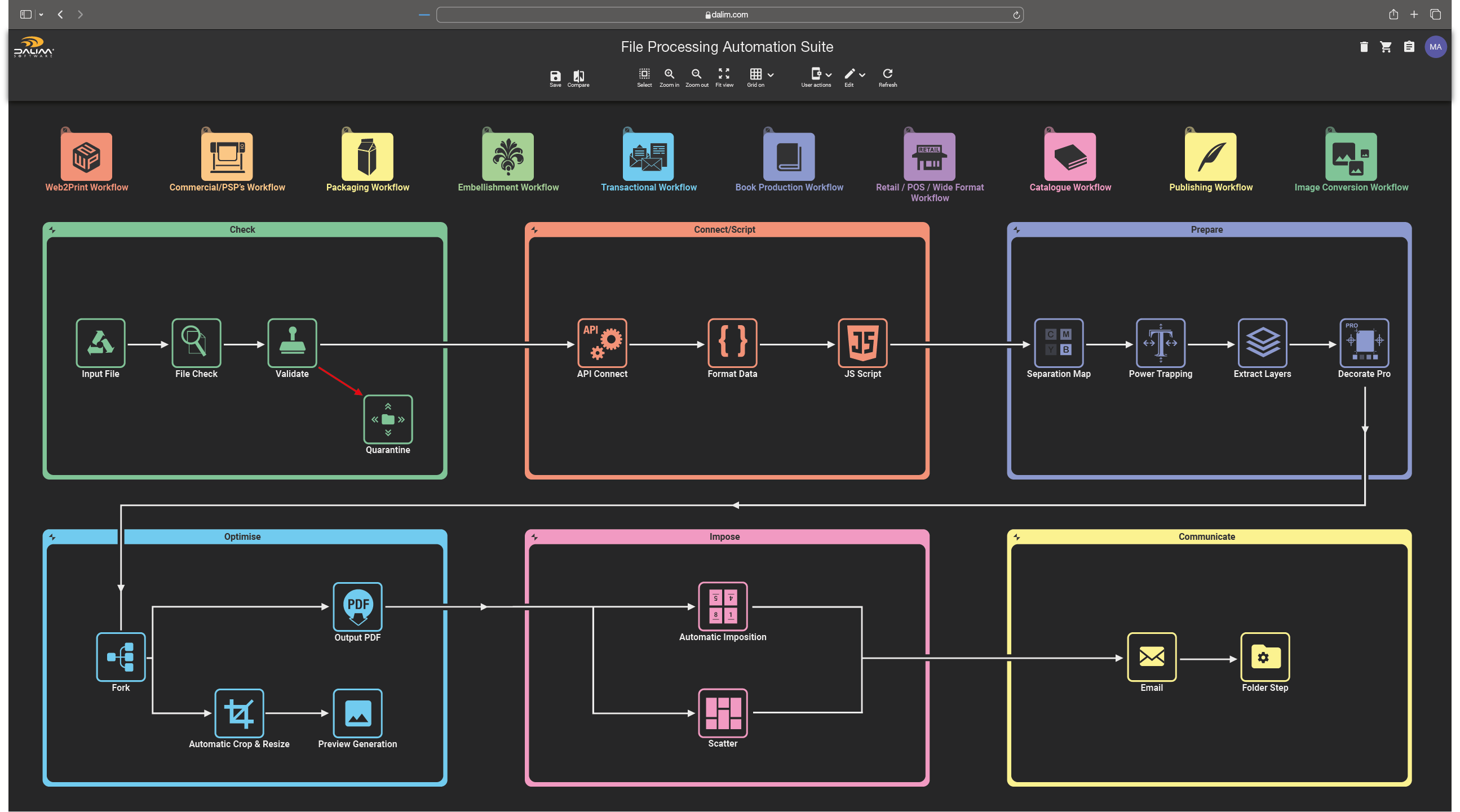Introduction
After an exciting few days at Hunkeler Innovationdays 2025, one thing is clear—our industry is transforming faster than ever. Walking the show floor, speaking with experts, and seeing the latest innovations in action, we picked up on three major trends that are reshaping the way we work.
If you were at the event, you probably felt it too—this industry is evolving, and those who embrace automation, smarter workflows, and new ways of thinking will lead the way.
Let’s dive into the key takeaways from Hunkeler
and what they mean for the future of print.
Workflow Connectivity – The Hidden Bottleneck
 At Hunkeler Innovationdays, it became clear that workflow inefficiencies—not press capabilities—are the real production bottleneck. Many printers realized that they are underutilizing their presses due to slow, outdated file processing.
At Hunkeler Innovationdays, it became clear that workflow inefficiencies—not press capabilities—are the real production bottleneck. Many printers realized that they are underutilizing their presses due to slow, outdated file processing.
Our micro-services approach addresses this challenge directly. By leveraging scalable services for pre-flight, normalization, optimization, transformation, imposition, and more. We allow a more responsive "process and print" approach where files can be processed and delivered to presses at speeds matching or exceeding the press itself.
Interestingly, we noticed press manufacturers actively seeking partnerships with workflow software developers. This shift from standalone software to service-oriented architecture allows printers to maintain their familiar workflow interfaces while dramatically expanding processing capabilities through cloud resources.
Digital Transformation in Book Publishing

The book industry continues to evolve in fascinating ways. Despite predictions of its demise with each new digital innovation, physical books remain popular while new production methods transform the industry. The rise of self-publishing has created demand for shorter, with more diverse print runs.
Digital printing and finishing technologies now enable cost-effective production of different books within the same print run. This revolution allows small publishers and independent authors to produce professional-quality books without massive upfront investments.
Our technology supports this transformation through rapid imposition processing that can handle thousands of pages in seconds rather than hours. Our multi-lane imposition capability allows printers to run multiple jobs simultaneously on a single print run and then direct different streams for appropriate finishing. We also provide tools for e-book conversion, audiobook approval workflows, and automated pre-flight and correction of amateur-created files—essential services as printers expand beyond traditional printing into full-service publishing support.
Industry Renewal Through Education and Accessibility

The perception of printing as an outdated industry is finally being challenged by showcasing its modern reality: robotics, coding, automation, and collaboration with major brands.
Our latest generation of technology supports this renewal by prioritizing ease of adoption. We've designed our solutions to be learned in days, not months, recognizing that both newcomers and experienced professionals reskilling for digital workflows need intuitive tools. The printing industry is experiencing a renaissance at the intersection of digital technology, creative publishing, and human expertise.
Conclusion
Hunkeler Innovation Days 2025 demonstrated that by embracing automation, connectivity, and accessibility, print providers can thrive in an increasingly digital world. Are you ready to take your workflow to the next level?